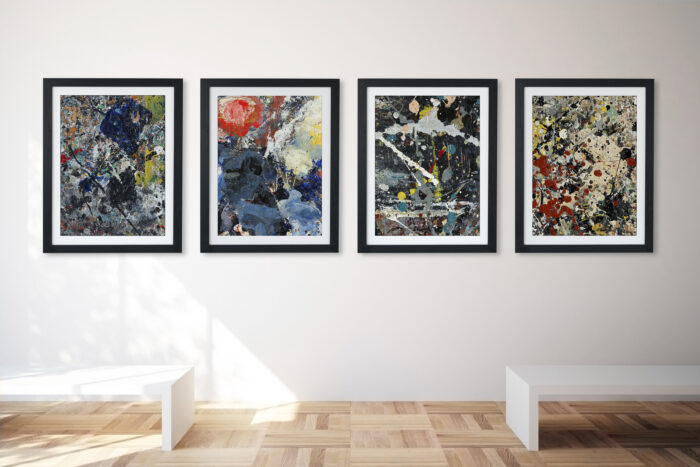The Jackson Pollock Studio, in collaboration with Iconic Moments, released Beyond the Edge, a debut collection of limited-edition prints and NFTs (non-fungible tokens) that depict the perspectives of Jackson Pollock’s studio floor.
Pollock’s floor, where he created his painting, is often unnoticed. The floor is the site upon which the artist “dripped, poured, and splattered paint across unstretched canvas.”
Why are the works special? Before Pollock, it was uncommon for a painter to work with a canvas laid directly on the floor. Pollock has overturned the upright painting convention, which had been firmly established for five centuries.

Now, Pollock’s works will reverberate in media other than the typical canvas. A few pieces from the collection will also be included in the Pollock-Krasner House & Study Center’s permanent collection, which is located in East Hampton, New York.
How was this collection made? To create these works, high-resolution pictures of the paint splashes on Pollock’s studio floor that accumulated over time were taken. These separate bits were combined to create four different pieces of art.
Pollock’s floorstudio NFTs are sold at prices ranging from 0.6 ETH ($1.130,55) to 5 ETH ($9.421,25).

NFT’s Paradox
Pollock’s floor pattern NFTs seem uninspired in some way. The artist unintentionally created it. These NFT collections continue the blockchain-based art market practice trend that has been seen. Generally speaking, NFT was designed to produce “artificial scarcity,” which makes someone have private property in the digital realm and allows for the expensive sale of digital art.
Digital imaging was essentially created to overcome the limitations of analog cameras, typically for scientific and military missions. Moreover, thanks to digital technology, people may replicate images more easily. Digital images allow for unlimited free duplication.
However, it doesn’t seem like capitalism is happy to reduce the value of this digital art to nothing.They attempt to introduce NFT, as a way to gain private property in the digital economy. This artificial scarcity makes digital arts have a high sale value, and this phenomenon shows how “capitalism is holding back the productive forces.”
Free(dom) Art
Art has been under capitalism’s production mode for a long time, even before NFT. What is the problem if capitalism controls and exploits the arts? Under capitalism, art has never been a liberation from human alienation. Art is not the actualization of human’s deepest abilities and expressions. Art is only a means to accumulate more and more capital, regardless of its creativity, expression, and authenticity.
Then, how do we create ‘free art,’ which is art that liberates and is free from the shackles of capitalism? A fundamental transformation of society is needed to liberate art. What we need is a social condition that values the work of every artist by not exploiting them. In this circumstance, artists can be more creative and authentic.
